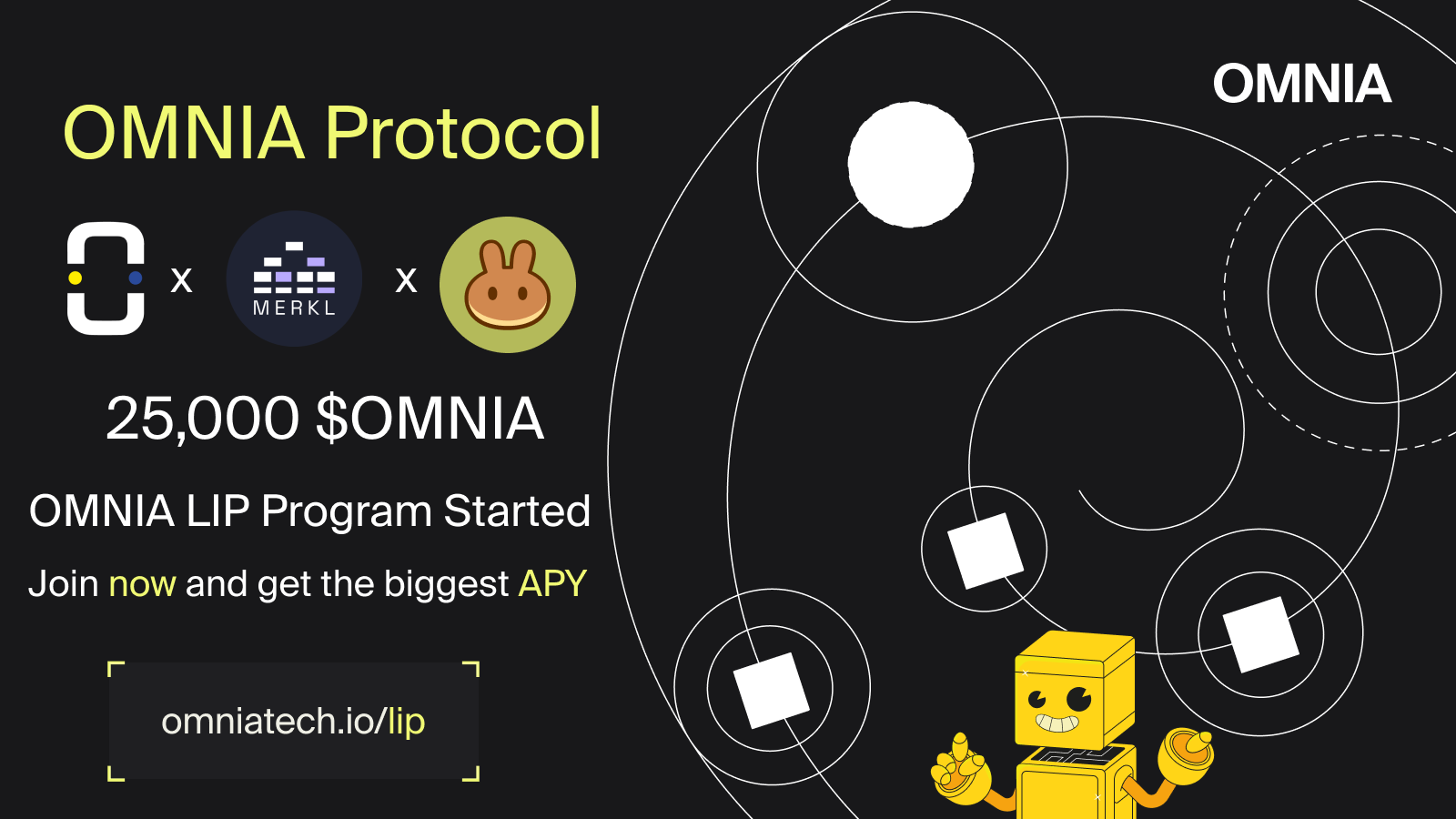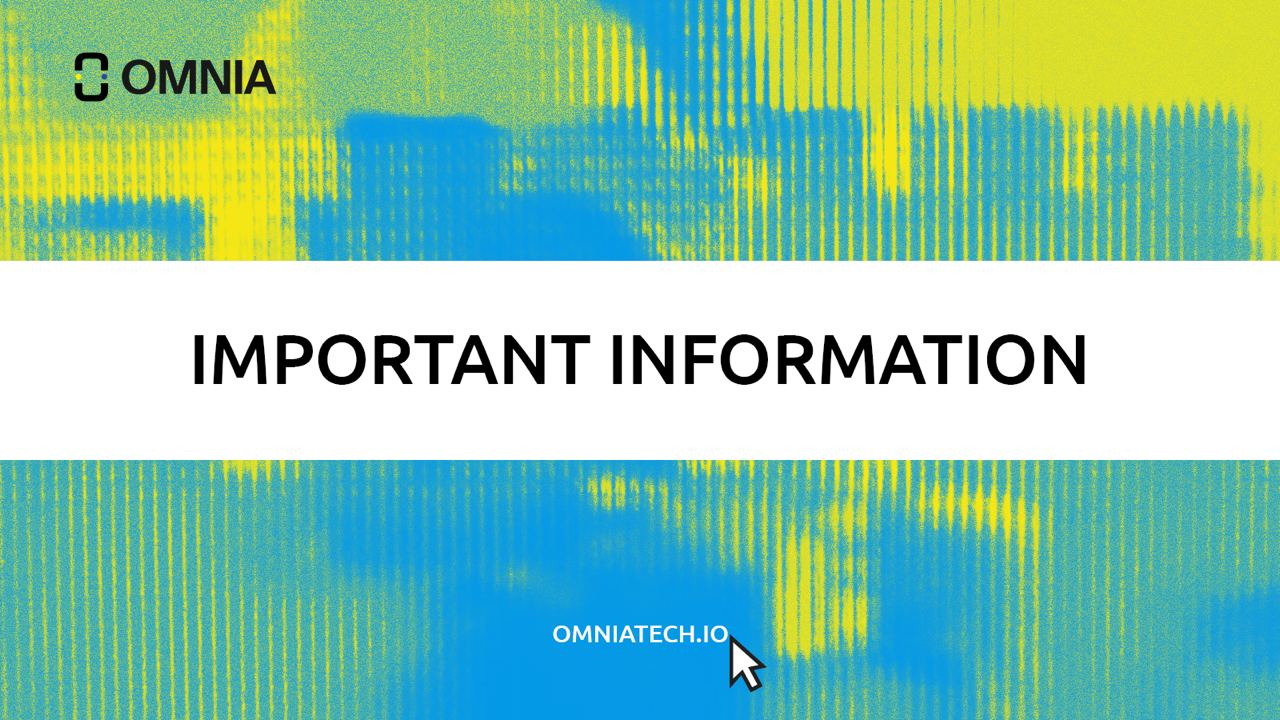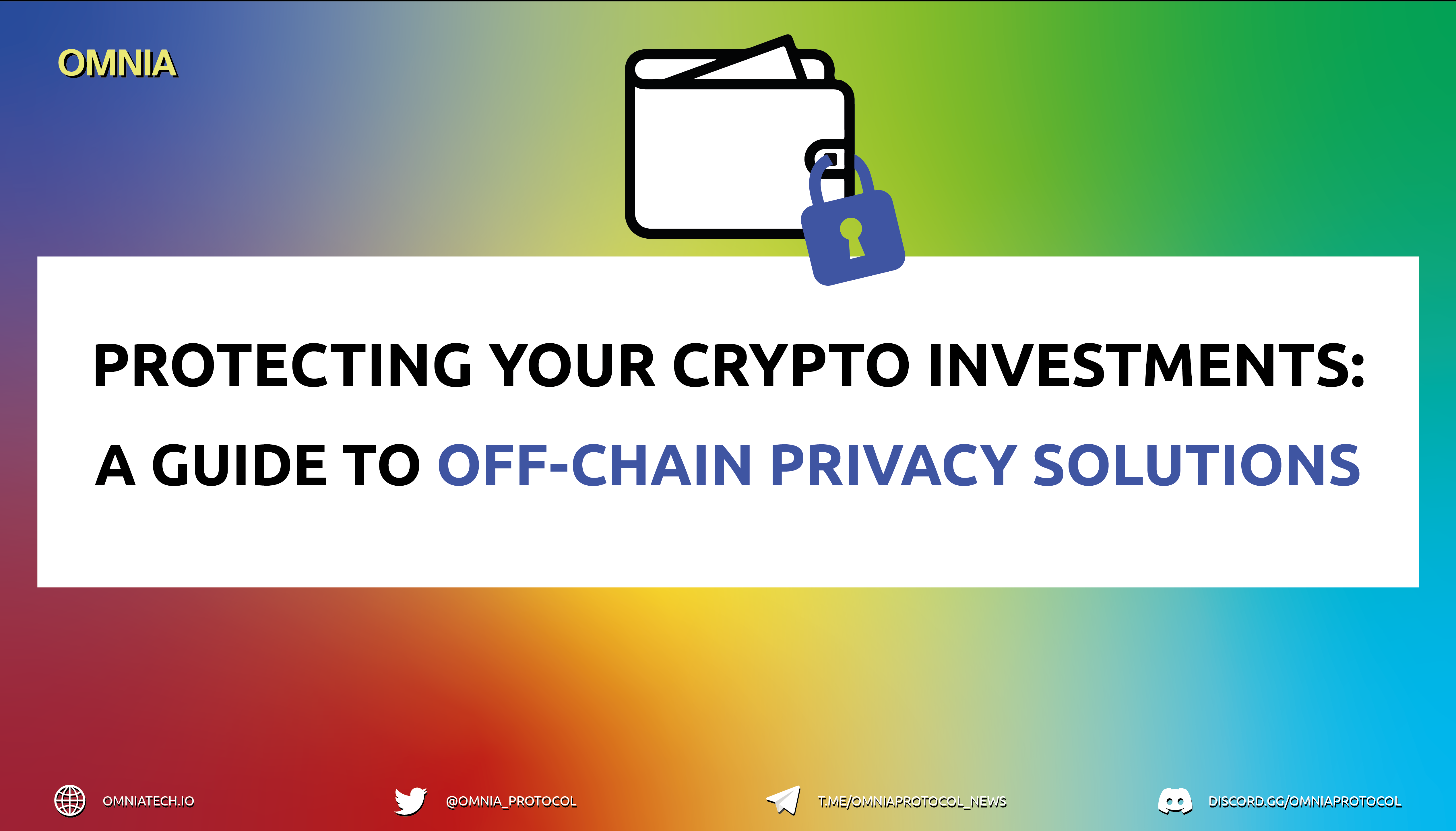
Protecting Your Crypto Investments: A Guide to Off-chain Privacy Solutions
The crypto market has grown rapidly in recent years, and with that growth comes an increased focus on privacy. With more and more people using cryptocurrencies, the need for privacy in transactions has become increasingly important. Off-chain privacy is a critical aspect of the crypto market that is often overlooked.
This blog post will delve into off-chain and on-chain privacy in the crypto market. We will provide an overview of mixnets and private mempools used by OMNIA as part of their off-chain privacy solution and technologies like zero-knowledge proofs and ring signatures used by ZKSpace, ZCash, and Monero for on-chain privacy solutions.
What does End-to-End Privacy in Crypto Transactions Look Like: An Overview
To better understand end-to-end privacy, crypto transactions can be divided into two stages: from wallet to broadcast and from validation to confirmation.
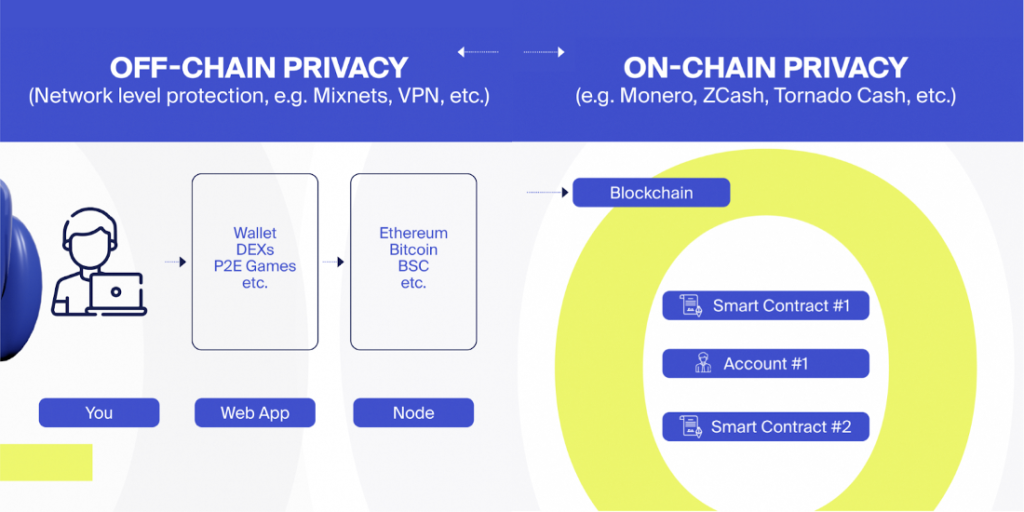
Stage 1: From Wallet to Broadcast (off-chain privacy solution)
In the first stage, when your transaction is broadcasted from your wallet, it circulates in the network staying in the public mempool for a few seconds or minutes before being mined. In this period, individuals expose their information, and outsiders can track the behavior and correlate it with their chain activities, front-run the transaction or determine the user’s identity by analyzing transaction patterns. This is where an off-chain privacy solution like OMNIA keeps your IP address, metadata, behavior, and other sensitive information hidden from public viewing. OMNIA provides off-chain services and offers privacy guarantees at the network level.
Stage 2: Validation to Confirmation (on-chain privacy solution)
Most people think of the second stage of a crypto transaction when they hear about privacy. Privacy coins like ZCash and Monero focus on privacy that happens on-chain; this hides and protects the amounts and the recipient of a specific transaction. These coins use technologies like zero-knowledge proofs and ring signatures to hide the receiver address and the transaction amount. This way, even if someone were to gain access to the transaction details, they would not be able to see who the receiver was or how much was sent. A layer-2 Dex like ZKSpace prioritizes the privacy of transactions when packaging and aggregating transactions. It then uses Ethereum’s Layer-1 for the ZK-roll-up. The mixing happens on Layer2, and on-chain is necessary for users to interact with the rollup.
End-to-End Privacy
To achieve full end-to-end privacy in a crypto transaction, you must use both off-chain privacy solutions like OMNIA and on-chain privacy. By combining these two technologies, you can keep your information private throughout the entire transaction process.
Types of Privacy-Enhancing Technologies
- Zero-knowledge proofs are mathematical proof systems that allow two parties to verify information without revealing it to each other. In the context of on-chain, these proofs validate transactions without revealing any sensitive information, such as the identity of the sender or receiver.
- Ring-signatures are a type of digital signature that enables any participant in a network to validate a transaction made by another entity in another group without disclosing who approved it. Monero uses three different ring signatures; this video explains how Monero keeps transactions confidential with RingCT.
- Mixnets are used at OMNIA to maintain off-chain privacy. Basically, mixnets are an old and reliable technology that consists of mix nodes, which absorb your data, shuffle it with data from multiple other users, then spit everything back out in random order to the next mix node. As a result, one node only has information from two nodes adjacent to it, and after data travels through several of them, no one will be able to know anything about your activity. Omnia’s whitepaper explains that their technical objective is to leverage all our academic and security research knowledge to augment mixnets with state-of-the-art methods for timing obfuscation and decoy traffic injection to guarantee the utmost privacy
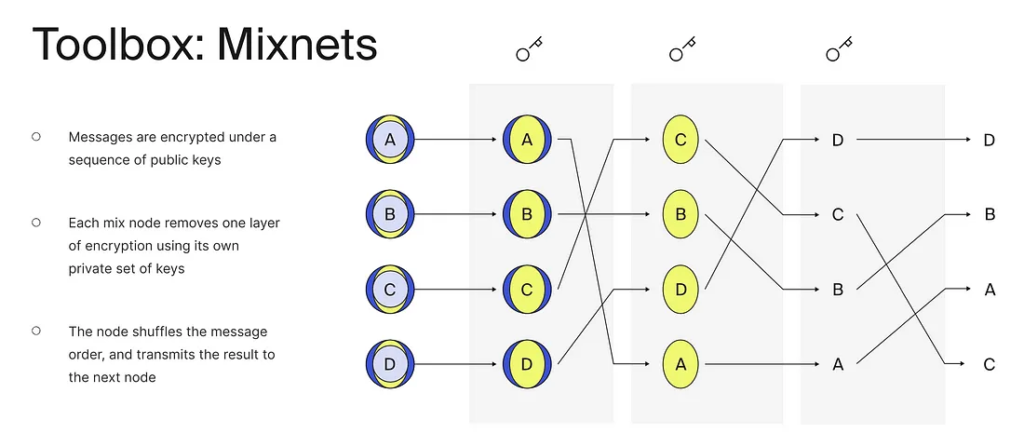
–> Read More: How OMNIA is Taking Blockchain Privacy to the Next Level
Off-Chain Transactions vs. Off-Chain Privacy vs. On-Chain Transactions vs. On-Chain Privacy
Rule of thumb
Off-Chain part
- while transaction travels the internet network
- while transaction travel third parties (wallets,node providers, etc)
- white in pending state in mempool etc.
On-Chain part
- After the transaction has been mined and included in a block or proof (L2)
Off-Chain Transactions
Off-chain transactions are processed outside the blockchain, tend to be quicker than on-chain transactions and come with lower fees. An IBM article states that off-chain transactions involve values beyond the blockchain and can be executed through various means.
- Off-chain transactions occur outside the main blockchain, eliminating the need for validation and reducing transaction fees and processing time.
- Off-chain transactions also offer anonymity, as they are not recorded on the blockchain. If participants choose to disengage, their involvement will not be a permanent record.
- Off-chain transactions can be completed almost instantly without any delays. Additionally, the costs are minimal since they don’t take place on the blockchain.
Off-Chain Privacy
While the OMNIA founders were researching privacy within the blockchain, they discovered a gap between the abundance of on-chain privacy solutions yet no off-chain privacy solutions designed with privacy and security at their core that protect the user’s metadata. OMNIA was created to address off-chain privacy by leveraging mixnets along with different layers of encryption, adding obfuscation, decoy traffic, and delayed communications so that traffic correlation is impossible.
On-Chain Transactions
On-chain transactions are permanent and recorded on the blockchain network, leading to a slower process compared to off-chain transactions.
On-Chain Privacy Technology
Monero and Zcash are blockchains that anonymize users. Zcash and Monero allow users to “shield” their transactions without exposing their addresses or transaction value. Zcash uses Zero-Knowledge Proofs, and Monero uses Ring Signatures. On the other hand, a Layer-2 Dex like ZKSpace was designed as an Ethereum scaling strategy with on-chain privacy benefits. The terminology here is tricky; while a layer-2 ZKSpace is an off-chain protocol, it derives its security and validity proofs from Ethereum (Layer-1) on-chain. L2 transactions are finalized when the L1 contract accepts the validity proofs. In essence, it is a hybrid scaling solution with privacy on-chain.
–> Read more: Differences Between Off-Chain And On-Chain Privacy
Minting NFTs While Preserving Privacy
NFTs are notorious for their lack of privacy. On platforms like Ethereum, transaction histories are public for every wallet address. When users post their NFT as their profile pic, it is easier than people think to find the NFT holder’s wallet address. When Jimmy Fallon showed off his Bored Ape NFT on national TV, he exposed NFT’s lack of privacy. Savvy watchers easily mapped Fallon’s NFT to his wallet address to find his other purchases. While having a wallet address isn’t concerning, it will be once NFTs represent medical records or land titles.
ZKSpace (formerly ZKSwap) is a layer2 Dex based on ZK-Rollup-based solution. ZKSpace launched ZKSea, an NFT minting center and marketplace and ZKSquare, a payment service to bring privacy and low transaction costs to the NFT experience. ZKSpace prioritizes privacy for Ethereum users to mint, buy and sell NFTs via ZKSea and ZKSquare to pay with zero knowledge technology. Using ZKSea and ZKSquare would keep transaction values and addresses private, the on-chain portion. To get full end-to-end privacy, users will need off-chain privacy.
NFTs and Off-Chain Privacy
When an NFT transaction is signed and submitted to a node that validates it, the unconfirmed transaction can be seen on network explorers as nodes output the transaction ID. A miner node then accepts the transaction and maintains it in a pool before being included in a block. Consequently, users’ metadata, IP addresses, and other critical information can be available to the public
throughout this process. Linking this metadata with owners of NFTs and additional identifiable information, as seen above, can lead to dire consequences. Users often turn to mixers and other methods, which work to a certain degree for on-chain privacy. Off-chain privacy is often dismissed.
OMNIA empowers users’ off-chain privacy by leveraging private mempools, which are private endpoints between users and miners, Flashbots, and more.
–> Read More: NFTs and off-chain security
There are several benefits of using off-chain privacy in the crypto market:
- Off-chain privacy can increase the security of transactions by masking the origin, destination, and transaction amount. This can prevent fraud and reduce the risk of theft.
- Off-chain privacy can protect user privacy by keeping transactions and personal data private. This can prevent user data from being leaked, misused, or sold to third parties.
- Off-chain privacy helps maintain the anonymity of users, which is vital for those who value their privacy.
In conclusion, off-chain privacy provides many benefits to the crypto market, including increased security, user privacy protection, and anonymity preservation. By understanding the differences between on-chain and off-chain privacy, and the benefits of using off-chain privacy, users can make informed decisions about how they want to manage their privacy in the crypto market.
